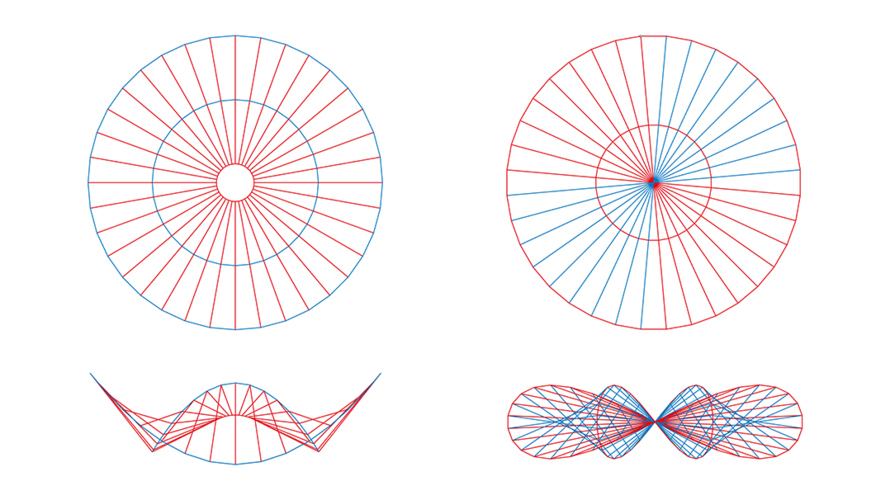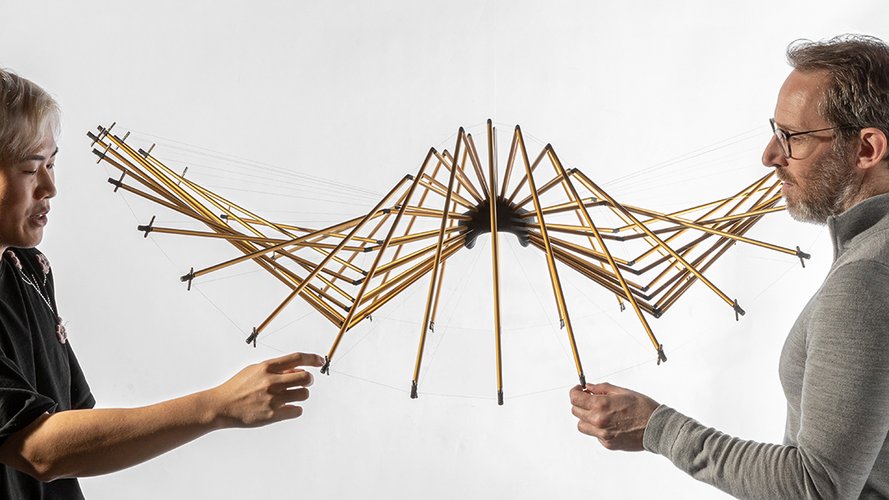Reciprocal Waves
Project Coordination
Prof. Dr. Pierluigi D’Acunto, Tao Sun (Professorship of Structural Design, TUM)
Dr. Marina Konstantatou, Richard Maddock (Specialist Modelling Group, Foster+Partners)
The ability to work with both form and forces in the structural design process is crucial, particularly during the early design phase, as these are key parameters that impact the static behavior of a structure. Graphic statics offers a powerful geometric framework for the conceptual design of structures in static equilibrium, owing to the interdependence between form and force diagrams. When the form diagram of a self-stressed spatial pin-jointed framework has an underlying planar graph, its corresponding force diagram is reciprocal. It can itself be viewed as a self-stressed framework whose force diagram is the original form diagram. These configurations generally possess inherent architectural elegance and structural performance, making them particularly suitable for lightweight structures.
The “Reciprocal Waves” installation was developed as part of a research collaboration between the Professorship of Structural Design at TUM and the Specialist Modelling Group at Foster+Partner in London. The project consists of a pair of suspended structures that work as reciprocal self-stressed systems. The structures were developed using vector-based 3D graphic statics (VGS), an equilibrium-based approach for structural form-finding. Based on VGS, for a given pin-jointed framework in static equilibrium regarded as a form diagram (F), a force diagram (F*) can be constructed in which the equilibrium of the force vectors concurring into each node of the form diagram (F) is represented by closed cycles of parallel force vectors. Due to the reciprocity between the two structures, if the force diagram (F*) is regarded as a form diagram itself (F’), its force diagram (F’*) coincides with the original form diagram (F).




